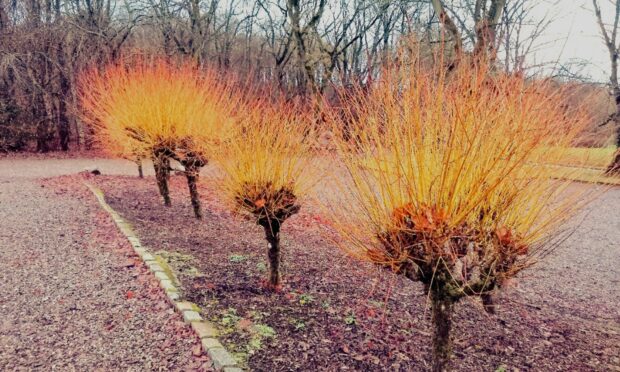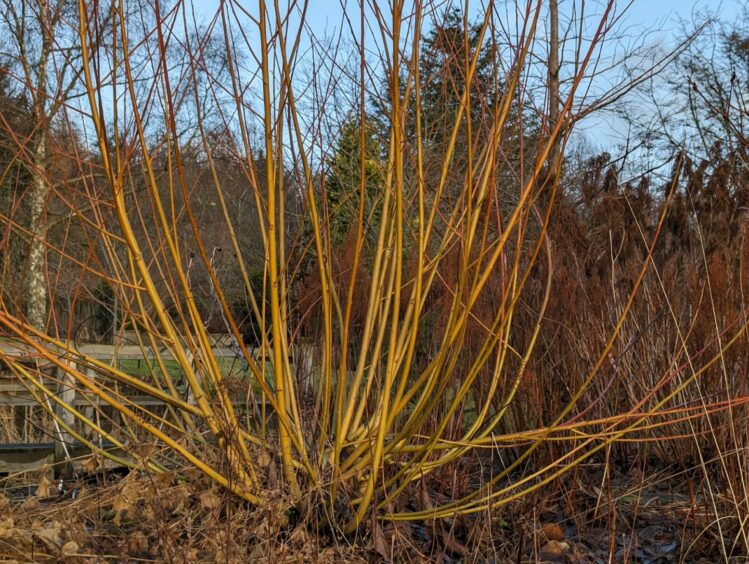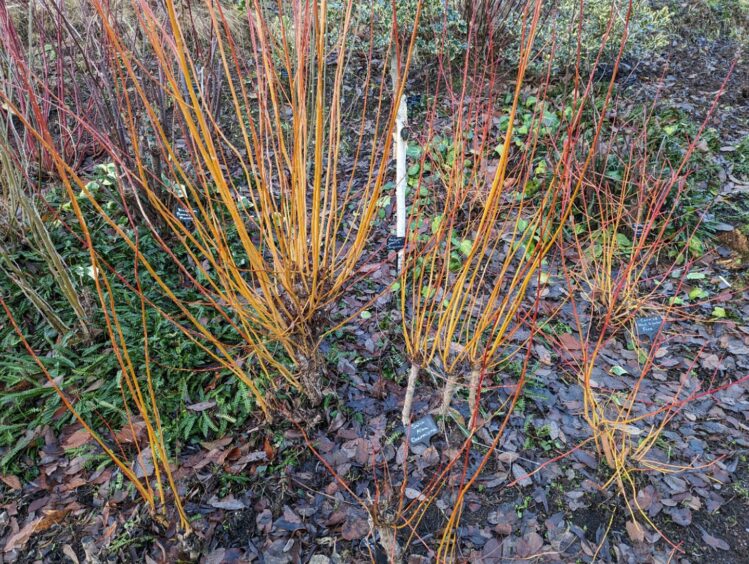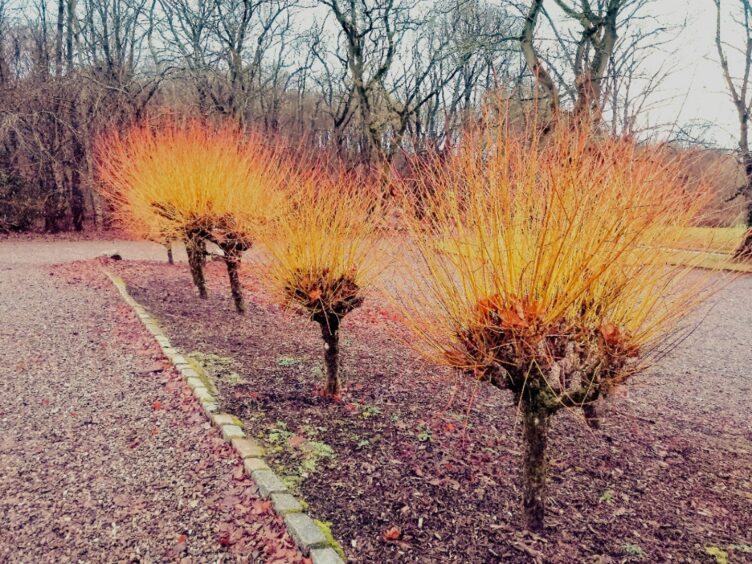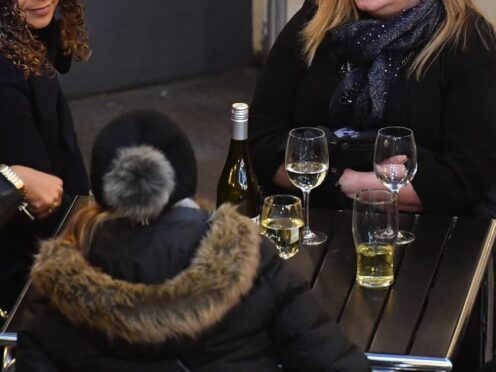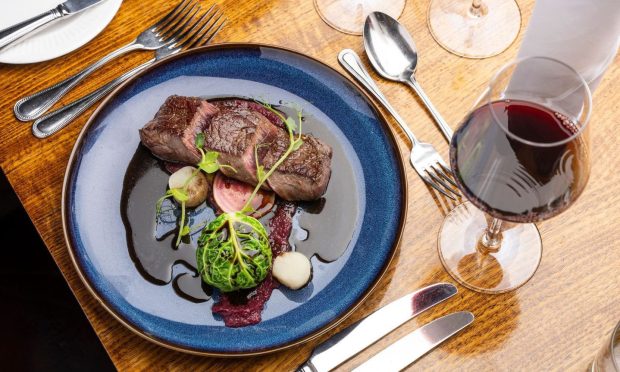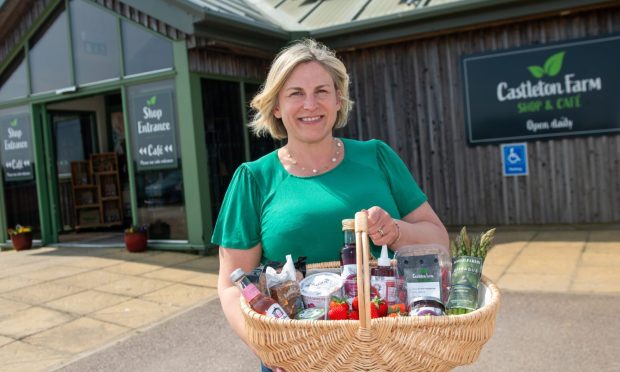As a wise, old, twinkly-eyed professor once said: “Happiness can be found, even in the darkest of times, if one only remembers to turn on the light.”
At Pitmedden Garden, even the gloomiest of winter days is lifted by the vibrant pollarded Salix alba subsp. vitellina ‘Britzensis’.
The car park island beds really light up the darkness and lift the spirit of many a walker on the estate.
Lifting the January blues
Many plants can in fact bring showstopping colour at this often dank time of year. Festive fun is over. Christmas compete. Hogmanay and first footings finished. January sales raided.
Feels like a while before we’ve got something exciting to look forward right? Well the stop gap for me asides getting all the usual garden winter pruning, groundwork and year ahead planning is the pops of colour from certain set of magic plants.
These bring bursts of colour that almost feels underserved but much needed in the midst of the January blues.
What to use
Coppicing and pollarding are two techniques used on specific plants to achieve the wondrous spears of colour, contrasting the grey monotony.
Plants such as willow (Salix) and dogwoods (Cornus) can be used for both.
The brilliant white-stemmed bramble (Rubus cockburnianus ‘Goldenvale’) can be for used coppicing. No sniggering at the back now.
The range of colours across the dogwoods and willow include vivid greens, purples, reds, oranges, and yellows.
Some worthy of note include Cornus alba ‘Sibirica’ for vibrant red stems. Cornus alba ‘Kesselringii’ for dark purple stems. Cornus sanguinea ‘Winter Beauty’ or ‘Winter Flame’ for rich orange stems.
Cornus stolonifera ‘Flamiravera’ for yellow tips which become an olive green at the base. Salix x rubens ‘Batsfordiana’ and the aforementioned Salix alba subsp. vitellina ‘Britzensis’ offer luminous orange and yellow stems.
Coppicing and pollarding
Coppicing is when you allow a plant two years to mature after planting then you start to cut the stems hard back to the ground in spring to allow next year’s colourful stems to appear.
Stems are cut back to around 5cm from the ground. Pollarding is similar but rather than cutting hard to the ground like with coppicing, there is a trunk left at a selected height.
This is typically around 60cm to 90cm. The stems are then cut hard down to within 5cm of the trunk (two buds more realistically thereafter).
The grand thing with pollarding being you get the effect of height over winter but it’s possible to prune during spring without bothering with ladders and so on.
Pruning for both types are done just before bud burst of leaves in order to maximise the time that the stems are available to be seen during the gloomy winter weeks.
A wee spot of feed after pruning helps out the plant. You get balanced fertilisers to apply or you can pop down some decent compost or well-rotted manure.
The leftover stems can be used to propagate more plants if you wish. They are treated as hardwood cuttings.
Your leftover pruned stems are also highly pliable and if you’re the artsy type then you can weave them to make items.
I’ve seen a few cracking garden ornaments such as rabbits, owls etc made out these woven stems.
Big leaves
Some plants are even coppiced or pollarded for the effect of large leaves rather than coloured stems.
It sounds odd but it can be an effective and showy way to highlight areas in the garden. Plants such as elder (Sambucus), the Indian bean tree (Catalpa) and the foxglove tree (Paulownia) are well suited to this.
Bad rep
Pollarded willow are actually largely featured in municipal streets in Europe. On a visit a few years back to Lake Geneva in Switzerland I was amazed at just how many pollarded willows lined the busy and ruthlessly clean Swiss streets. Pollarding sometimes gets a bad rep as copout solution to dealing with big trees that have been mistakenly planted in small gardens.
It’s a fairly common sight to see trees (regardless of whether they are suited to pollarding or not) having had a ruthless chop back to the main trunk and a few stems and spending the rest of their days with sprouting colourless stems sprouting away with the appearance of a hairy green bear.
If done properly and with the right plant though, pollarding can be a beautiful thing and can provide hope, inspiration and joy when it’s needed most.
The good thing for you is that you can try it out if you like. Even those with a small garden will likely have space for a plant or two. Give it a go!
Take care and happy gardening.
